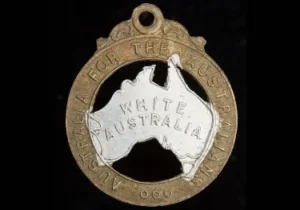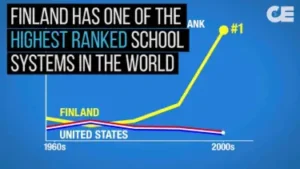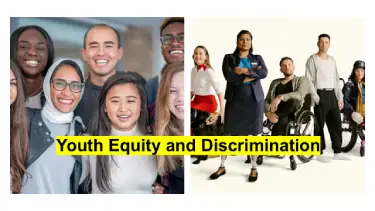Description
Explore how 31% of Australian youth are concerned about equity and discrimination issues and learn solutions to foster inclusivity.
Introduction
Equity and discrimination are critical issues for Australian youth today. A significant 31% of young Australians identify these as pressing concerns affecting their lives and futures. This article explores these issues, delving into their roots, impacts, and potential solutions to foster a more inclusive society. Understanding these challenges and addressing them through informed policies and community efforts can pave the way for a fairer Australia.
Understanding Equity and Discrimination
Defining Equity and Discrimination
Equity ensures everyone has access to the same opportunities, accounting for individual differences. Discrimination, however, is the unfair treatment of people based on characteristics like race, gender, or socioeconomic status.
Historical Context

Australia’s history is marred by discriminatory practices, from the treatment of Indigenous Australians to the White Australia policy. These historical injustices have left enduring legacies that continue to affect the youth today.
Current Landscape
Recent reports indicate that discrimination remains prevalent in Australia. Studies reveal that young people from diverse backgrounds face barriers in education, employment, and social integration, impacting their mental health and overall well-being.
The Impact on Youth
Socio-Economic Factors
Youth from lower socio-economic backgrounds face significant challenges in accessing quality education and employment opportunities. This perpetuates a cycle of poverty and exclusion.
Racial and Ethnic Discrimination
Young people from minority racial and ethnic groups report higher instances of discrimination. This affects their mental health and limits their opportunities in various sectors, including education and employment.
Gender and Sexual Orientation
Discrimination based on gender and sexual orientation remains a significant issue. Young women and LGBTQ+ individuals often face harassment and unequal treatment, impacting their mental health and career prospects.
Disability and Health
Youth with disabilities encounter physical and attitudinal barriers that hinder their full participation in society. This discrimination affects their educational and employment opportunities and their social inclusion.
Addressing Equity and Discrimination
Government and Policy Response
Current Policies and Initiatives
The Australian government has implemented several policies aimed at reducing discrimination, such as anti-discrimination laws and initiatives promoting diversity and inclusion. However, these measures need continuous evaluation and improvement to ensure effectiveness.
Effectiveness of Policies
While some progress has been made, gaps remain in policy implementation. Strengthening these policies and ensuring strict enforcement is crucial for real change.
Community and Organizational Efforts
Role of NGOs and Community Groups
Non-governmental organizations (NGOs) and community groups play a vital role in combating discrimination. They provide support services, advocacy, and educational programs to raise awareness and promote inclusion.
Successful Initiatives
Programs like the National Anti-Racism Strategy and various community-led initiatives have shown success in reducing discrimination and promoting equity.
Proposed Solutions and Actions
Education and Awareness
The Importance of Education

Education is a powerful tool for combating discrimination. Integrating equity and inclusion into school curricula can foster a more understanding and accepting youth population.
Strategies for Raising Awareness
Public awareness campaigns and educational workshops can help sensitize the broader community about the impacts of discrimination and the importance of equity.
Policy Recommendations
Specific Policy Changes
To address root causes, policies must focus on:
– Enhancing anti-discrimination laws.
– Promoting equitable access to education and employment.
– Supporting marginalized communities through targeted programs.
Community Engagement
Encouraging Community Involvement
Community involvement is essential for sustaining efforts against discrimination. Encouraging youth participation in advocacy and community service can drive significant change.
Youth Empowerment
Empowering Youth
Empowering youth to advocate for their rights and participate in decision-making processes ensures their voices are heard and their needs addressed.
Summary
Equity and discrimination are significant issues affecting Australian youth, with 31% identifying these as major concerns. Understanding these challenges and addressing them through comprehensive policies, community efforts, and youth empowerment can foster a more inclusive society. By promoting education, raising awareness, and ensuring strict policy enforcement, Australia can move towards a more equitable future.
Engaging Question
How can we, as a community, better support our youth in their fight for equity and against discrimination?
Call to Action
Join the movement to create a fair and inclusive Australia for all. Support policies that promote equity and stand against discrimination. Share this article and let’s work together for a better future. #YouthEquity #EndDiscrimination #InclusiveAustralia
References
National Anti-Racism Strategy: https://humanrights.gov.au/our-work/race-discrimination/projects/national-anti-racism-strategy-and-racism-it-stops-me-campaign
Australian Government Department of Social Services – Social Inclusion: https://www.dss.gov.au/careers/diverse-and-inclusive-workforce
UNICEF Australia – Child Rights: https://www.unicef.org.au/united-nations-convention-on-the-rights-of-the-child

